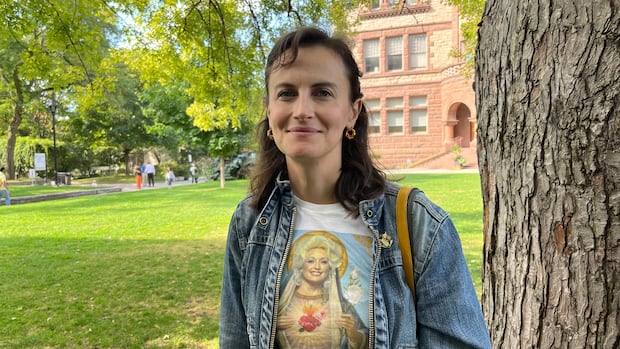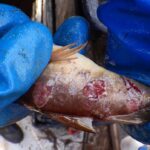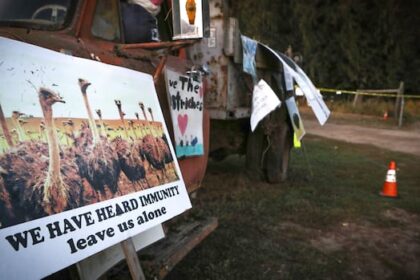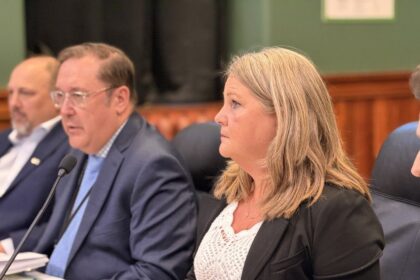The CurrentIt’s pretty unusual in the medical system for a patient to be tasked with finding their own cure. But that’s what happened to Stephanie Azzarello in 2023 when she was told she needed a liver transplant or she would die. Stephanie Azzarello is healthy today because a stranger volunteered to donate part of her liverElizabeth Hoath · CBC Radio · Posted: Oct 26, 2025 4:00 AM EDT | Last Updated: 2 hours agoListen to this articleEstimated 7 minutesBecause of a rare liver disease, Stephanie Azzarello was told in 2023 that she would die without a liver transplant. (Elizabeth Hoath/CBC)LISTEN | A stranger south of the border donated part of her liver:The Current22:58Would you become a living donor to a stranger?It’s pretty unusual in the medical system for a patient to be tasked with finding their own cure. But that’s what happened to Stephanie Azzarello in 2023 when she was told she needed a liver transplant or she would die. Azzarello has primary sclerosing cholangitis, a rare chronic liver disease that causes damage to the bile ducts and the liver.A decade after she was diagnosed, there was so much damage to her liver she went on the waiting list to get a liver from a deceased donor. But the Toronto woman was told it was very unlikely she’d ever get an organ that way. Instead, she needed to find someone who was willing to undergo a major surgery to donate part of their liver to her. No one in her family or close circle of friends was a match, so she was forced to go public. “I mean, I’m not asking for directions. I’m asking for a vital organ,” recalls Azzarello, now 41. “It was terrifying, but I knew I didn’t have a choice because I was going to die on that list.”Dr. Mamatha Bhat, a clinician scientist at the University Health Network Ajmera Transplant Centre in Toronto, is working to change how patients are prioritized for liver transplants. (Elizabeth Hoath/CBC)Dr. Mamatha Bhat is trying to change the system that puts Azarello and so many other patients in that position. She’s a clinician scientist at the University Health Network Ajmera Transplant Centre in Toronto. It’s the biggest transplant hospital in North America. Patients are prioritized based on the Model for End Stage Liver Disease, also known as the MELD score. This method takes the results of a few blood tests to determine how urgently someone needs a liver. But Bhat noticed the model put women and people with rare conditions like PSC at a disadvantage. Even though they could be very sick, the results from the blood tests used for the MELD score didn’t put them high on the waiting list.For example, one indicator of liver dysfunction is a high level of creatinine in the blood. But the MELD score isn’t adjusted for the fact that female bodies have less muscle mass and therefore lower levels of creatinine to begin with, says Bhat. Likewise, men are more likely to die suddenly in circumstances that lead to organ donation, and some male livers are a poor fit for smaller female bodies. “Each patient is a bit unique,” she said. A linear statistical model like MELD that only considers a few blood tests doesn’t reflect that complexity, Bhat says.So starting in 2023 Bhat and her team got funding from the Canadian Institutes for Health Research to develop an artificial intelligence system that would evaluate many different factors and eventually replace the MELD score. “You can really bring together multiple parameters, like blood test results, historical changes in those blood test results, changes in the clinical condition of the patient over time,” said Bhat. She says early results show the AI system can do a better job of prioritizing patients based on need. Bhat says she hopes it will be used in hospitals across the country in a year or two and cut down the mortality rate among people waiting.Data from the Canadian Institute for Health Information shows there were 655 liver transplants in Canada in 2024. Another 609 remained on the waitlist during that time, and 89 people died while waiting.That’s why Bhat tells patients like Azzarello to try to source their own livers in the meantime.The campaignAbout half a year after going on the waitlist, Azzarello was too sick to work. She went on leave from her job teaching art history at the University of Toronto.Her social media campaign to find a donor took a few months to really take off. But early in 2024, her face popped up on a phone late one night in Portland, Oregon. “I was kind of an insomniac during that time period,” said Trisha Beard. That night she’d just fed her one-year-old and was scrolling social media when Stephanie’s story caught her attention. “We were born five days apart,” says Beard. “Her having been through so much sickness for so many years … I could put myself in her shoes of what that would look like and feel like. And the idea that there was something, possibly, that I could do that would make that better for another human that was suffering, I think that really drew me in.”At first, someone involved in Stephanie’s campaign told Beard she couldn’t donate because she lives in the United States. But she decided to send her paperwork to the hospital anyway. Within hours, someone with the transplant centre contacted her and asked how soon she could come to Toronto to get tested to see if she was a match. (The Ontario health system would cover her travel and medical costs.) A few weeks later, Beard was going through tests in the same hospital where Azzarello was once again a patient. Her condition was deteriorating, she had jaundice, was malnourished and had sleep reversal where she slept all day and was up all night.Azzarello had been reluctant to meet Beard — she didn’t want to get her hopes up — but she eventually agreed.Azzarello, left, is pictured with Trisha Beard, from Portland, Ore., at the Toronto hospital where Beard donated part of her liver to Azzarello. (Submitted by Stephanie Azzarello)The moment they metShe clearly remembers the first moment she saw Beard walking down the hallway. “I just made a beeline for her. I may have pulled out my IV because she was real,” Azzarello said. “I just grabbed her and I held her and I held so tightly because I thought what if she just evaporates?” The women chatted and cried for more than an hour. “She was obviously very sick,” Beard said. “And my just thoughts went to ‘why can’t we do this now? Why can’t we just make a spot in the schedule? Let’s make it happen. Let’s do it today.’” Beard flew home that afternoon, and the next week they got the news. She was a match. Beard says she was excited but also nervous.Azzarello is now back at her job teaching art history at the University of Toronto. (Elizabeth Hoath/CBC)“I am very aware that this was a very serious surgery. And so my odds were good, but I also knew that there was a chance that things wouldn’t go the way that we had expected.”Beard wrote both of her young children letters, just in case. But she never thought about backing out. “I come from a religious family and so I felt this was part of God’s calling,” Beard said of her thinking at the time. “This is where I’m supposed to be. This is what I’m supposed to be doing. I’m just sitting in this and trusting that this is gonna work out the way that it’s meant to.”On June 12, 2024, after more than 12 hours of surgery, part of Beard’s liver was transplanted successfully. The liver regenerates to full size three months after surgery in both the recipient and donor. “I didn’t give birth to a third life, but I was able to give life a third time,” says Beard. She calls Azzarello her family now. They talk and text every week and are making plans for a reunion visit. Though Azzarello takes more than 20 pills a day and goes for monthly blood tests, she is back at work and feeling good. “I have this healthy moment given to me by my beautiful organ, by my beautiful organ donor. I just live my life,” says Azzarello. “I’m alive because of her.” ABOUT THE AUTHORElizabeth Hoath is a senior producer and documentary editor based in Vancouver, B.C. She has worked as a producer in the North and on The Current and is now with The Audio Documentary Unit.
This woman had to campaign to find a liver donor. Transplant docs say there should be a better way










